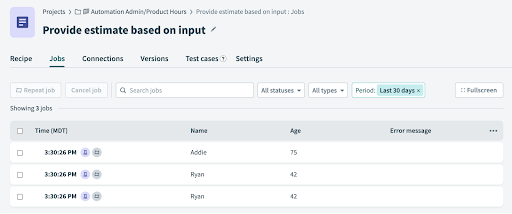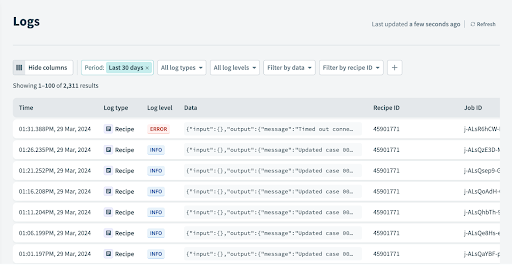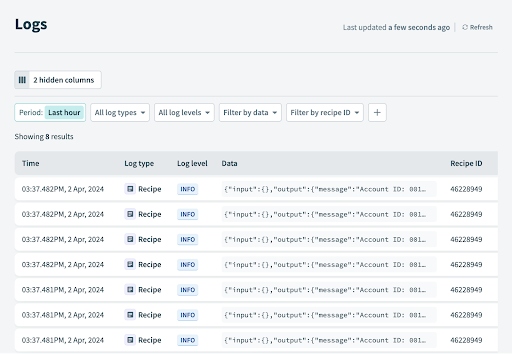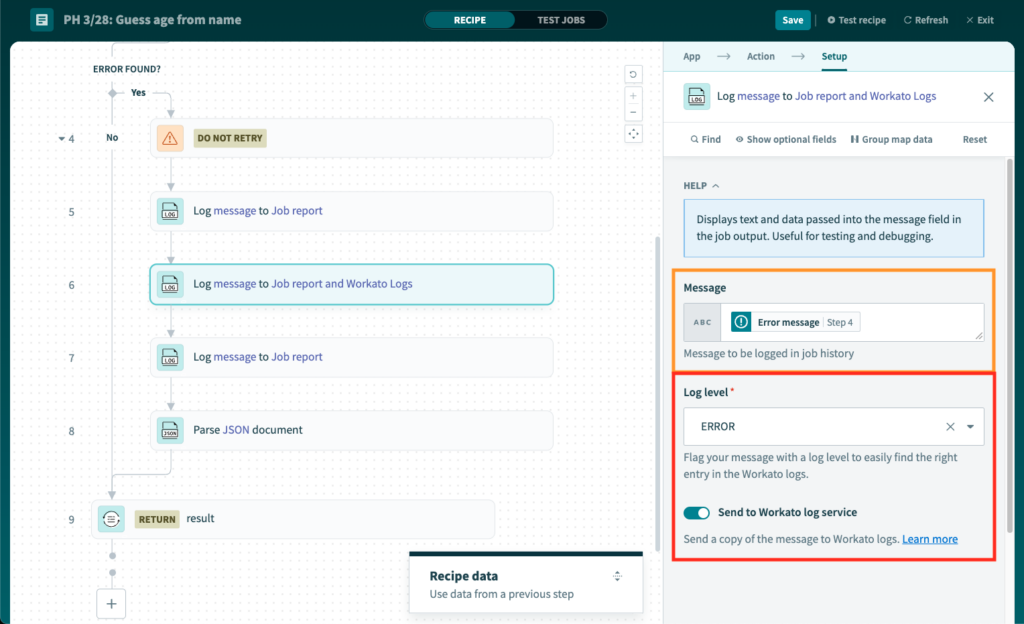Expedite auditing, testing and troubleshooting with logging
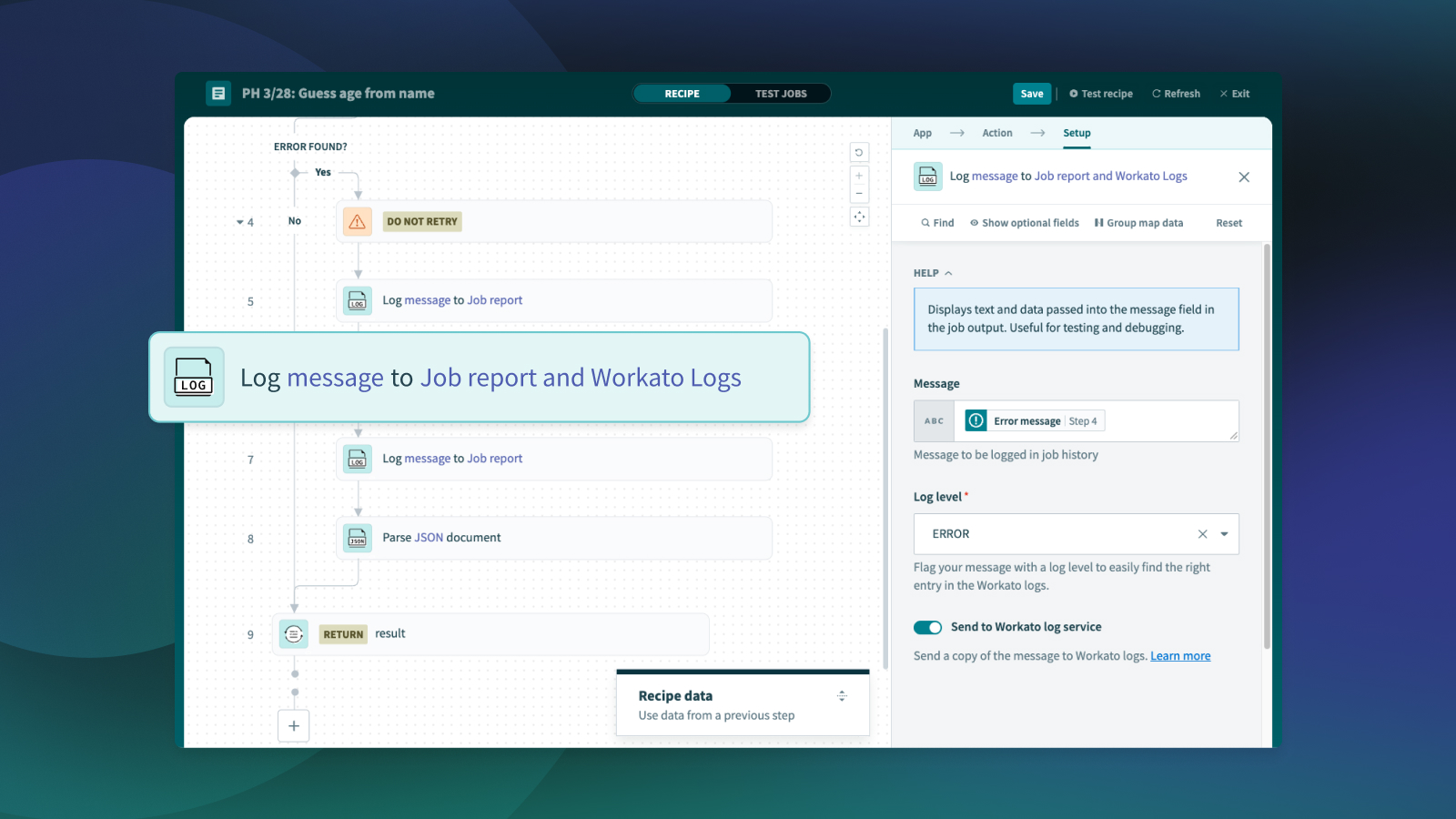
Logging is an essential tool for auditing, testing, and troubleshooting. With logging, Workato builders can gain visibility into their running processes and workflows, spot issues faster, and build strong and resilient automations.
What is logging?
Logging is the practice of recording information about the execution of a workflow or process during runtime. This information typically includes errors, warnings, debug messages, and informational messages set up by the builder to provide specific information.
In Workato, there are two places you can view logs: at the recipe level, and through the log service.
Job logs are a default functionality that can be viewed at the recipe level. When a Logger by Workato step is included in the recipe, you can view the log output by clicking into the specific job details, or by adding the log message step as a column in the jobs table.
Workato’s log service is a centralized storage spot for collecting and searching through log entries that have been specifically set up to send to the service. You can currently log messages to the log service from recipes and any On-prem agents (version 23.0 or newer).
Why should I log anything?
Logging makes life easier! While it is possible to view job run details by clicking into a row, when a recipe is running in full force it can be difficult to find the problematic jobs to troubleshoot, or get enough detailed visibility to find steps throwing errors.
Here’s 2 specific use cases where logging can play a critical role:
- Business objects that are used in many processes, such as customer accounts, can be difficult to track across all workflows that access the record. Logging the interaction and account name together can piece together a story for what has happened to that particular account across recipes.
- Steps that are repeated in a loop are not fully visible from the job reports (only the last execution is displayed). By adding a logging step into the loop and sending it to the log service, you can get information about each and every execution of that loop.
For this example, compare the log results of a batch operation at the recipe level on the left, showing only the last record, and the log service on the right, showing logs for all 8 records.
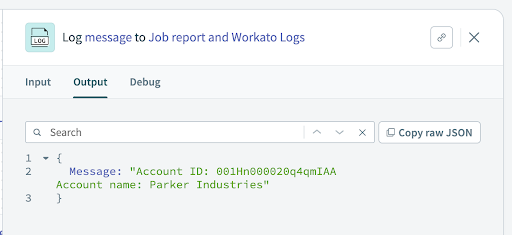
When should I use recipe-level logs vs. the log service?
Recipe-level logs are most useful for debugging in a single recipe or simple process. If you are beginning your journey with Workato, or developing a small-scale automation, recipe-level logs are a tool in the toolbelt to help you build resilient automations.
The log service, on the other hand, can handle multi-recipe processes and log detail beyond what is available at the job level. The log service has filters to narrow scope to relevant processes, such as log type, log level, dates, and recipe IDs.
As you grow your usage and develop more automations, the log service becomes a more and more valuable tool.
Creating recipe logs
Within your recipe, add a Logger by Workato step and indicate the message to log. The message can be constructed from datapills specific to the job, values calculated in formulas, and/or text you type in manually to give more context.
Sending logs to the log service
To send logs to the log service, add a Logger by Workato step, indicate your message and log level, then toggle Send to Workato log service. Future job runs will log your message to the centralized log service!
Regardless of where you are on your Workato journey, logs play a pivotal role in helping you troubleshoot and manage your automation and orchestration. Happy logging!
